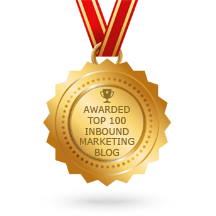 Are you spending too much money on marketing your business, with poor results - but you keep doing the same thing because you're not sure what else to do?
Are you spending too much money on marketing your business, with poor results - but you keep doing the same thing because you're not sure what else to do?
The definition of insanity is doing the same thing over and over and expecting a different result. If you feel you fall into this category when it comes to marketing your business then it's time to change the way you market.
Below are 7 marketing tips that many small business owners fail to do, or fail to do correctly when it comes to marketing.
1. Start with a 12 month focus for lead generation and business growth.
The results you have today are from decisions you made in the past. Another way to put it is, the decisions you make today regarding your marketing, will result in the profit (or loss) you see 12 months from now. If you get your marketing wrong, you'll spend valuable resources (time and money), and yield a poor result that will see you struggling in the not too distant future. That is why the first thing you're going to do is plan for the next 6, 9 and 12 months for your business.
2. Set realistic goals.
I've been in too many meetings where revenue goals were unrealistic and were determined just to keep the investors or top management happy - they lower moral and create a lot of unnecessary stress. Be realistic with your 6 and 12 month revenue goals. Given the economic climate and your resources what is a realistic revenue target for your business? Once you know your revenue goals, work out where it will come from. For example will it come from existing clients spending more, will it come from a price increase or will it come from new business? Remember to be realistic, not idealistic.
3. Understand your buyer personas.
Your buyer personas are the personas of people who are, and should buy from you. Not necessarily a customer persona, if you're looking for growth you need to find out why people aren't buying from you and rework your communication. A persona digs deep to help you understand a certain type of person: what is their job title, what does a typical day look like for them, what are their interests and values, what do they do to relax, do they have kids, what are their painpoints and needs? Take the time to research these personas, talk to customers, talk to people who don't buy, ask key questions during the buy process - document and formulate into your buyer personas. You may have 2, 3 or more personas that buy from you.
4. Articulate what you do.
No you don't sell widgets. You solve a problem. Get to the heart of what that problem is for each of your buyer personas and understand how you help take the problem away.
5. Know how you are different from the competition.
Do you have competitors? A competitor is a product or service that a potential client would purchase to fulfil a need, rather than yours. So while you personally may feel you don't have a direct competitor, think about it from your prospects' perspective. List how you're different and why people should buy from you and not the competition. Are you more experienced? Trustworthy? Convenient location? Marketing tip: don't be cheaper, you won't make any money.
6. Content and communication
Once you've completed the above steps you'll have a better idea who you're reaching, why and how to communicate to them. This insight will form the basis for your content. How will prospects, leads and customers engage with your company? From the beginning - lead generation, to the middle - lead nurturing and buy process, to the end - customer acquisition, retention and referrals. Write down every form of communication; telephone, email, social media, advertisements (online and offline) internet, ebooks, webinars, blog, web copy, networking, contracts and post sale. Then create a content calendar and flow chart to plan out the various forms of content needed. And finally write the copy, or at least have a calendar to write the copy.
7. Timing and scheduling
I can appreciate as a small business owner this may seem time intensive but, trust me, should you find the time to do this initial work you'll reap the rewards. Here's a guide to help you set aside the time needed to work "on" your business if you're serious about growth. Every 90 days put aside one entire day to create the plan. Then every 30 days put aside 1 day to review results and tweak the plan and take action. Weekly put aside 4 hours to finish the tasks before their due date.
Below is a list of resources you might helpful with regards to writing content, scheduling and understanding buyer personas.
I hope you find this article helpful. Please share your thoughts, comments or questions with regards to marketing below.
If you would like to learn how to market your business better, schedule in a free Marketing Assessment.
Additional Resources To Help You Market Better
Buyer Persona + Inbound Marketing = Success: Learn why and how here
Download Content Calendar For Blogging
Blogging Made Simple: Learn How To Write About What You Know

 Are you spending too much money on marketing your business, with poor results - but you keep doing the same thing because you're not sure what else to do?
Are you spending too much money on marketing your business, with poor results - but you keep doing the same thing because you're not sure what else to do?